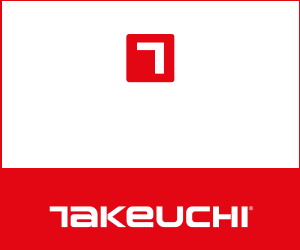People, machines, workflows - they have all become connected. In construction this means that we now have direct links between the office and field, between models and machines, software and hardware, platforms and services.
While the efficiency benefits of this connectivity might be more obvious on the higher level of project management, what does it bring to workers executing tasks on a project? Connectivity can help speed up project delivery, raise quality, achieve cost efficiencies, make work safer, and reduce environmental impact of construction projects.
The constructible process
In a typical project, each trade partner will produce and maintain individual sets of drawings or models that do not include direct links to shared source data. On a connected construction site, everything revolves around a shared process, based on shared models and shared data: the constructible process. The idea is to identify and solve issues related to physical construction up front and digitally with as much detail as possible. In a constructible process, federated models (from architecture, layout, structural engineering, MEP, etc), are developed and shared so adjacent project stakeholders can better coordinate as a team, which leads to meaningful improvements to delivery of the completed project.
Constructible models are far more than detailed geometric representations of the components and assemblies that comprise a physical design. Critical metadata, such as cost, weight and source, are all included so project stakeholders and ultimately, project owners are able to easily access all relevant construction data. This will help make informed decisions throughout the building process and beyond, to the ongoing operation and maintenance of a built asset.
With all types of technology in use on a worksite sophisticated contractors are enabling those technologies to automatically report on progress (when, where, and how much). The updated information is then used to track schedule and cost to provide contractors and owners with a real-time view as the project progresses.
Productivity gains
A connected site means that all hardware and software works in harmony towards on-time delivery and improved quality. Both on a process level, with seamless integration of workflows, as well as on a task level, with technologies supporting tasks, but also feeding valuable information to the process. On a connected construction site, users can continually monitor progress and cost in real time and address potential issues before they impact delivery.
Productivity tools such as global navigation satellite systems (GNSS), laser scanning, 3-D modeling software, imaging, machine control, and inertial navigation can drastically improve productivity on the various tasks. Engineers, machine operators, and surveyors using these technologies have doubled productivity when compared with conventional techniques. What’s more: the data they generate directly contributes to the coordinated delivery of the project.
Quality assurance
Studies have shown that the costs of rework in construction can be up to 25 percent of the contract value and 10 percent of the total cost of the project, often due to management, planning, and communication issues. Integrating the field and the office in a connected project, makes it easier for crews on site to better understand the designer’s intent, which in turn can reduce errors.
With constructible models directly automating the physical construction process, contractors can dramatically improve the accuracy of their work. For instance, models on machines help to control the blade and bucket for less risk. Likewise, laser-pointers on total stations guide field crews to execute layout, and modeled structural components are precisely milled with CNC machines.
Safety
Connected construction facilitates the need to improve the safety of workers in the field. Taking measurements remotely instead of in the middle of roadways or trenches helps crews to avoid risky practices. Mixed reality in the cab of an excavator can instruct operators of hazardous underground utilities. More broadly, fewer physical visits to worksites are needed. With improved visualization of work progress, project managers and inspectors can get the information they need remotely.
Transparency
Connected construction enables all stakeholders to determine the schedule, cost, and critical path of their piece of the project. This integrated approach to project management makes it possible to recognize and prioritize problems and visualize them on-screen—and solve them at any stage of the project (including after completion) before they affect schedule, cost, or quality.
Sustainability
Many of the benefits related to quality also directly affect sustainability. Working from live, updated models, field work is more accurate which minimizes errors that cause rework. In the case of earth-moving for instance, an over-cut will require commensurate rework and fuel consumption. More significantly, refilling an overcut will often also require additional machines and people such as a compactor and specialized operator to correct for the error. Knowing exactly what physical work needs to be done in advance also reduces waste. Fabrication teams can get more finished product from less steel. Cast-in-place concrete teams can avoid over-ordering formwork because they have greater confidence that they know exactly what will be needed for each project.

Closing the circle: Ground Developments Ltd.
A great example of a UK company that has closed the circle of connected construction is Ground Developments Ltd. (GDL), a ground engineering contractor from Whitburn. The company employs a 40-50 person crew and turns over some 18-20 million GBP. Working with Trimble technology, it has seen a 40+% efficiency improvement in production outputs over just four years, working on earthworks and a range of ground improvement techniques for infrastructure, roads, housing and commercial building construction.
Raise productivity
With rising amounts of work , the team had to spend a growing percentage of time on engineering, profiling and trying to achieve grade. Realising that they were getting limited production from the machines, the directors became interested in Trimble machine control technology. After a demonstration they decided, as the first company in Scotland, to invest in equipping the GDL dozer fleet with Trimble solutions.
Working with Trimble and SITECH UK & Ireland over the years, the Ground Developments team now operates a fleet of Komatsu and Cat®️ machines, equipped with Trimble Earthworks and Trimble GCS900 3D machine control technology. The office runs Trimble Business Center as the data heart of the operation. Wayne Barr is the company’s production director: “We are now using Trimble machine control on our entire excavator and dozer fleet, and I just love it,” he says. “It has helped us make tremendous progress rooting out inefficiency and gaining productivity working with real time data, exchanged between the office and the machines.”
2D to 3D
“One of our directors, Julius Newman, turns the designs from the client ― usually 2D drawings ― into 3D surface models using Trimble Business Center. We generate task-specific designs from those models and wirelessly push those out via Trimble WorksManager to the machines in the field. “With Trimble WorksOS we can keep track of where the machines are, the progress they’re making and the day-to-day cut, fill, volume, and compaction data, all highly accurately. In earlier days you would sometimes be looking at week-old machine data in the office.”
It is the interaction between the machines and the office that helps GDL win a lot of new business, and a lot of repeat business. Customers value the level of accuracy the contractor can provide, the tight tolerances their machines can operate to and the level of detail in reporting.
Accuracy from start to finish
Accuracy is particularly important on soil improvement projects, the type of work GDL specialises in. A compiler operator enhances the soil by injecting grout at a 5 meter depth. Deep soil mixing is typically used to improve the strength and stiffness characteristics of soft to very soft formation soils.
“We divide the area up into a 3x3 meter grid and inject every cell with a fixed amount of grout based on the time the injection process runs,” Barr explains. “The machine data coming from the injector boom extension provides accurate insights by telling the Trimble system the grout was injected at exactly the right location. Another computer measures the exact right amount to meet the requirements. So the geotechnical team can then report and validate that the treated area has bottomed out to a firm formation, based on the machine data. We can then feed the data back into the 3D model so we can see that develop in real-time.”
For GDL, fully embracing the Connected Construction concept has meant so much more than just getting the most out of the machines. “We’re optimizing models in the office, pushing these out to the machines on the fly, recording information on the work that is being performed, and feeding all that back to the office for production reporting and, if necessary, model rework,” Barr comments. “We have gone full circle. By keeping projects on track, thanks to the Trimble technology, we can take new ones on in the knowledge that we’ll finish on time for the next one. It has truly changed our entire operation.”
Got a story? Email news@theconstructionindex.co.uk



